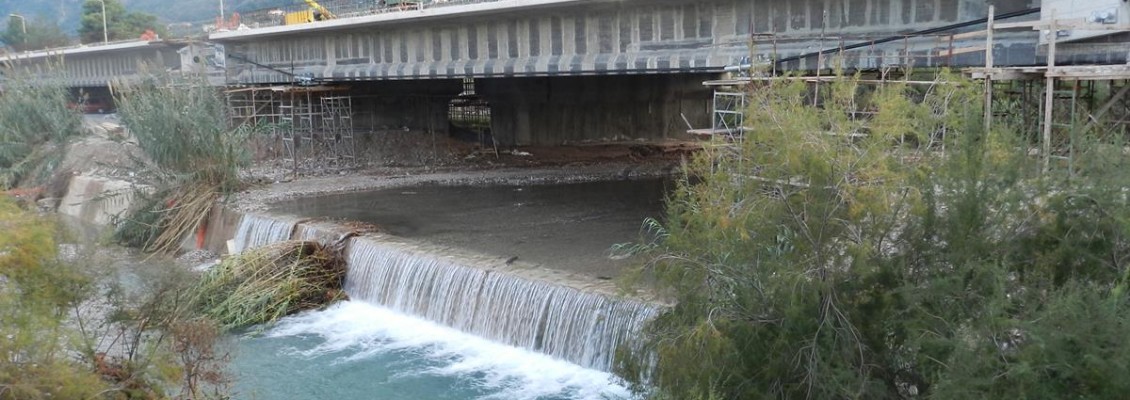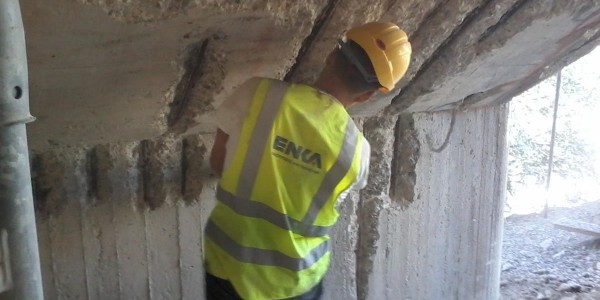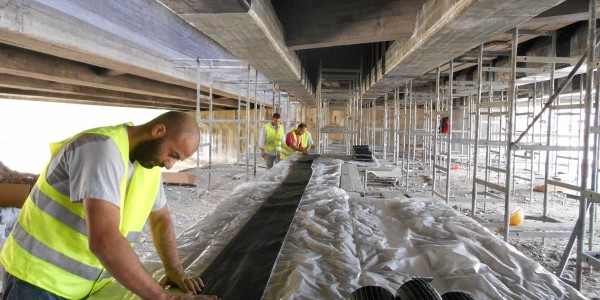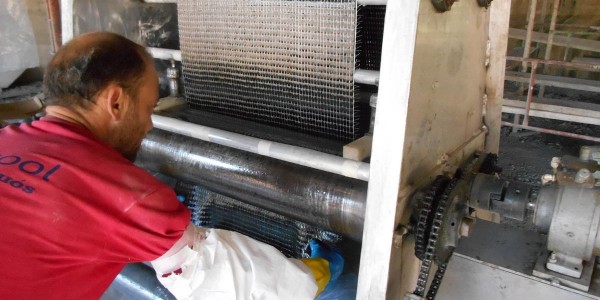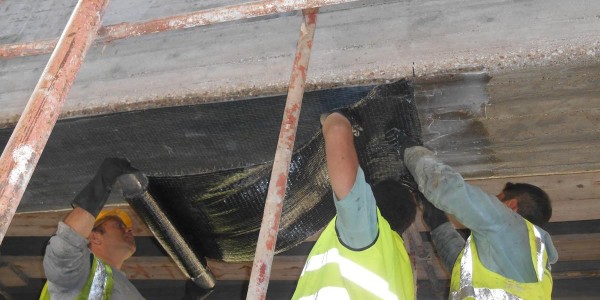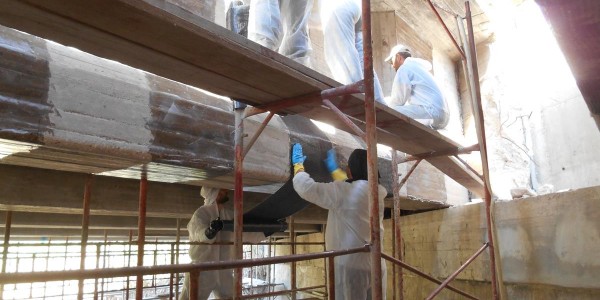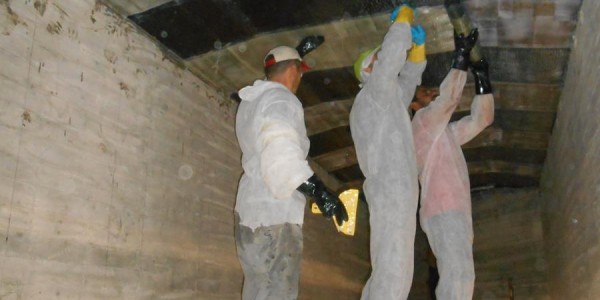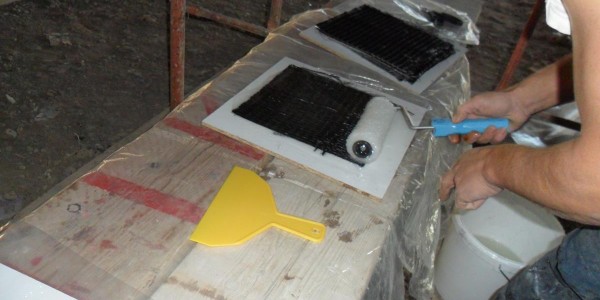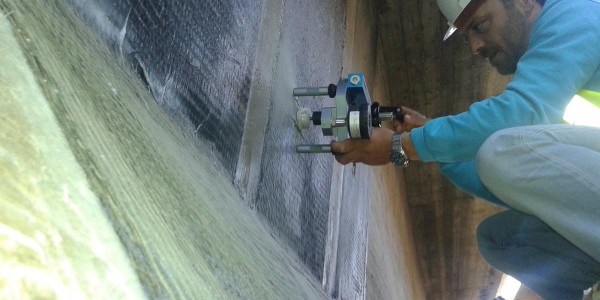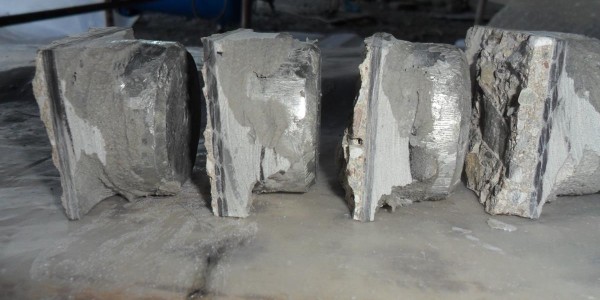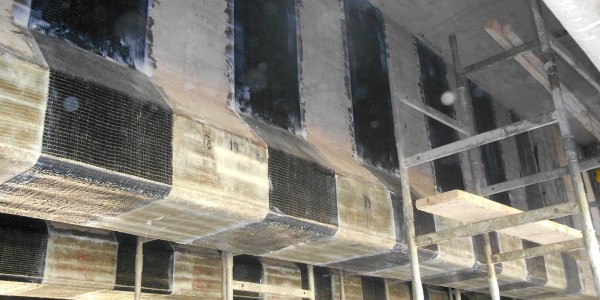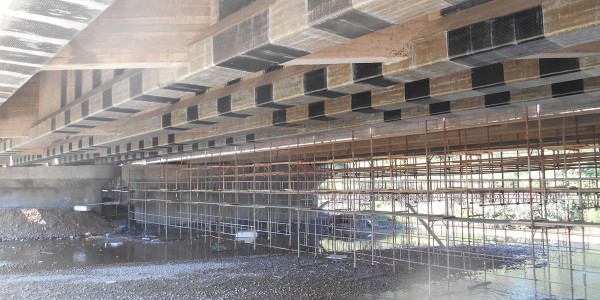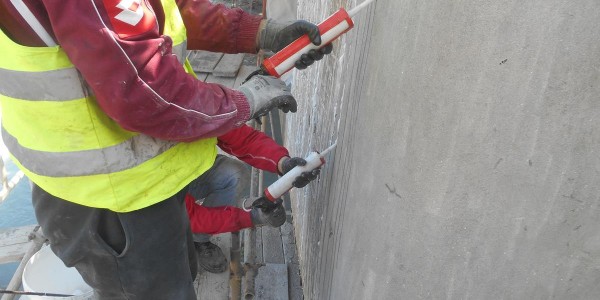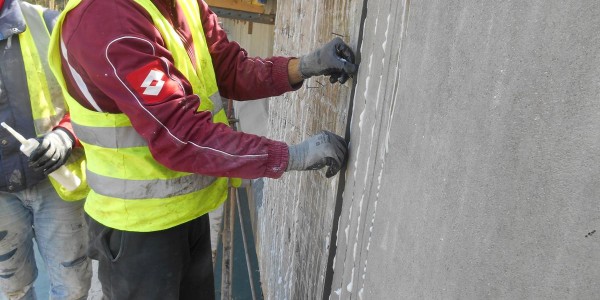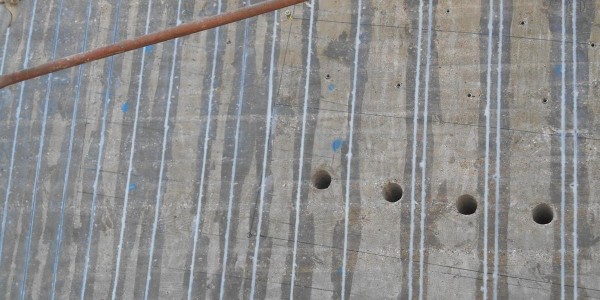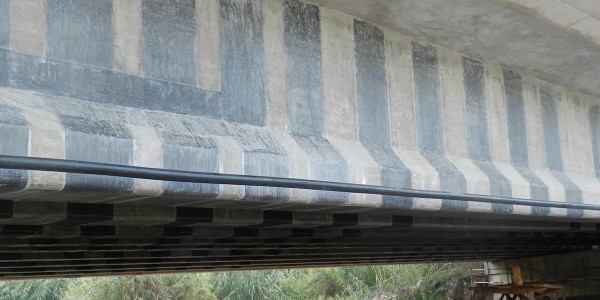The demolition of the existing bridge and the construction of a new one in the same position was found to be cost-ineffective and troublesome due to the high traffic volume needed to be channeled through diversions. On the one hand the bridge geometric characteristics could fulfill the new highway design parameters with minor interventions. On the other hand the structural assessment of the bridge per the new bridge and seismic codes concluded that the bridge could be retained with a retrofitting cost being approximately half of what is required for the construction of a new one.
The superstructure of each bridge section consists of five simply-supported prestressed in-situ concrete main girders per span, supported on elastomeric bearings. The superstructure reinforced concrete slab is supported monolithically on the main girders. Extensive surveying of the damage and required repair took place. The bearing capacity of the main girders and some parts of the concrete slab of the deck was enhanced by using Fiber Reinforced Polymers (FRPs). The impregnation of the fabrics was done with a proprietary machine (saturator), properly calibrated per the project temperature conditions in order to ensure a steady specified fabric/epoxy resin ratio. To enhance the durability of the concrete structure in the specific areas where the concrete cover was less than required, a layer of FRP was applied for protection. Prior to project commencement, trial applications of FRPs to confirm the experience of the application team, on site pull-off testing and FRP coupons specimens tensile testing in accredited laboratory took place. The quality control of the project included daily inspection check list, recording of ambient conditions, preparation of pull-off testing samples and FRP coupons samples. Furthermore, trial applications took place under dynamic traffic loading to confirm that FRPs could be applied and develop the minimum required composite technical properties and bonding on concrete substrate while the bridge is in operation. The total area of concrete surface repaired was 3,000m2. Approximately 13,000 m2 of FRPs were applied in addition to 4,000 composites fiber anchors (40cm length each) and 2,000m of NSM (Near Surface Mounted) strips. For the quality control purposes more than 50 pull-off tests were performed and more than 60 FRP double layered specimens 30x30cm were produced, from which more than 300 coupons of FRP were sent to the laboratory for testing.

